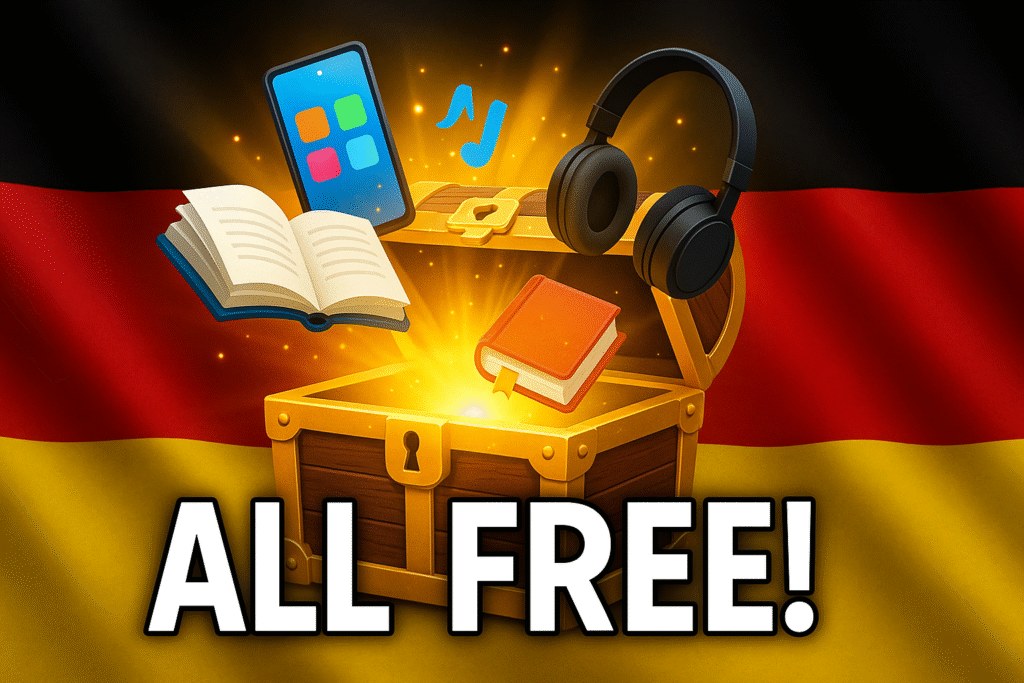
Are you planning to move to Germany or already navigating life here? One thing’s for sure: learning German will transform your entire experience. But with so many apps, courses, and platforms out there, where do you even start? The best part? You don’t need to spend a cent to begin your language journey. Let’s explore the most powerful free tools that can help you master German, no matter your learning style.
How Can You Build a Strong Foundation in German for Free?
If you’re new to German, start with platforms that offer complete A1 to B2 courses. These structured courses guide you through grammar, vocabulary, and cultural context. Look for:
- Deutsch.info: Offers multilingual explanations and exercises.
- Goethe-Institut’s ‘Deutsch für dich’: Interactive community and quality content.
- DeutschAkademie: Grammar-focused with level-based exercises.
These tools give you structure, clarity, and progression—crucial when building your foundation.
What Makes Grammar and Vocabulary Stick?
Grammar can be daunting, but the right tools make it digestible:
- YourDailyGerman Blog: Plain-English explanations with humor.
- nthuleen.com: College-style worksheets and notes.
- Linguee & Reverso Context: Real sentence examples.
- Cooljugator: Instantly see all verb conjugations.
Visual learners and readers will appreciate these tools for their straightforward approach and real-world usage.
Are There YouTube Channels That Actually Teach German Well?
Yes, and they’re game-changers. These channels offer engaging lessons without the fluff:
- Extra auf Deutsch
- Nico’s Weg
- Jojo sucht das Glück
- Easy German
- Learn German with Anja
- Herr Antrim
- Don’t Trust the Rabbit
- Get Germanized
These aren’t your typical boring tutorials—they bring the language to life.
Can You Learn German Without Looking at a Screen?
Absolutely. Turn idle time into learning time with audio:
- Slow German: Perfect for beginners.
- Coffee Break German: Light, fun, and culturally rich.
- Langsam gesprochene Nachrichten: Slowed-down news for intermediate learners.
- Finanztip & Leben Leben: For advanced, topic-rich listening.
- Geschichten aus der Geschichte: Deep dives into historical topics.
Whether you’re commuting or cleaning, these podcasts keep you immersed in the language.
How Can You Make German Vocabulary Fun to Learn?
Repetition doesn’t have to be boring:
- Quizlet & Memrise: Create custom flashcards or use community decks.
- Learn with Oliver: Get daily vocabulary emails.
- German Music & Kinderlieder: Improve pronunciation and have fun.
These playful methods make learning feel effortless and enjoyable.
Is It Possible to Practice Speaking for Free?
Yes! Speaking with real people is the fastest way to improve:
- Tandem & HelloTalk: Language exchange apps that match you with native speakers.
- Meetup & Facebook: Join local and online communities.
- GLOSS: Explore dialogues and real-life sentence structures.
Conversation doesn’t just improve fluency—it builds confidence.
How Do You Structure Your German Learning Journey?
Consistency beats intensity. Here’s a simple roadmap:
- Beginner (A1-A2): Start with “Nico’s Weg,” flashcards, and short writing practice.
- Intermediate (B1-B2): Add news podcasts, longer reading, and real conversations.
- Advanced (C1+): Focus on fluency, dive into specialized topics, and challenge your comprehension.
Mix tools based on your style, keep it light but consistent, and reflect on what’s working.
Ready to Start Your German Learning Adventure?
You don’t need expensive courses or perfect timing. Just the right tools, curiosity, and a bit of daily practice. Whether you’re a visual learner, an audio fan, or someone who thrives in conversation—there’s a perfect mix waiting for you.
Explore. Experiment. Enjoy the process. And if you ever need guidance or want to share your journey, ETAINFI is here to support you.
Tschüss und viel Erfolg!


